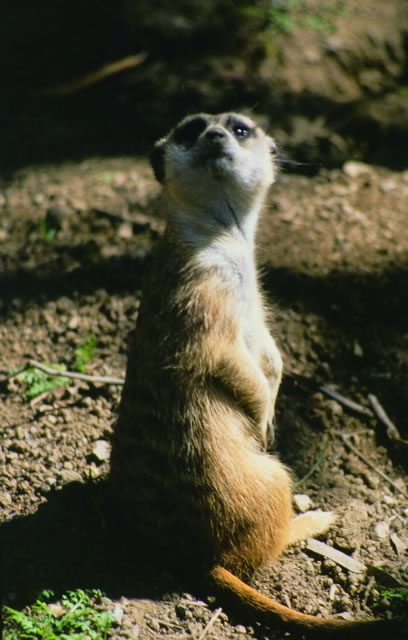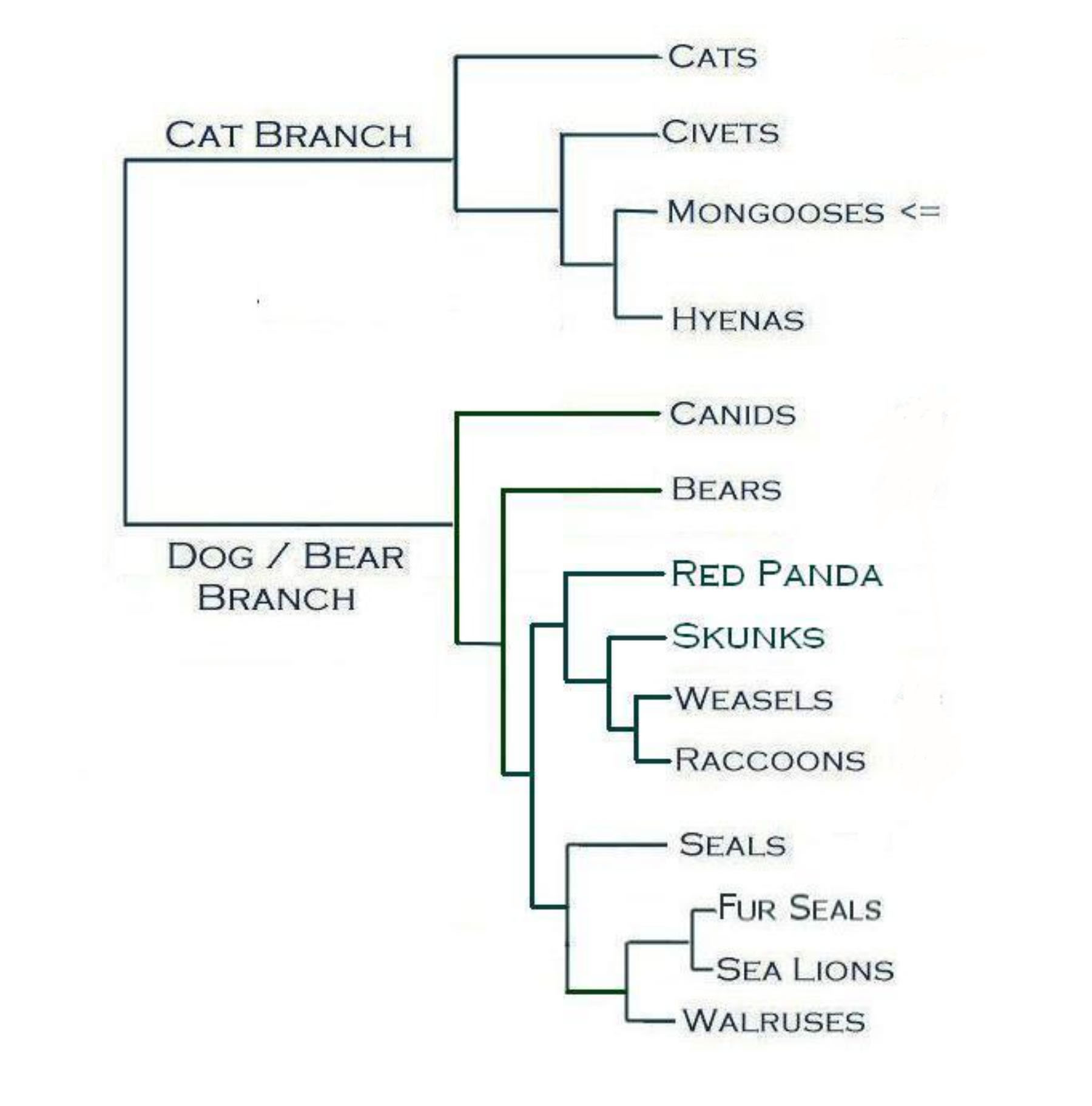Cooperative Breeding in Meerkats
Biology 342 Fall 08
Daniel Bernstein and Justine Spencer
Phylogeny
Reproductive Costs
Cooperative breeding behavior is a behavior that is common among species for which rearing young is costly in time and energy. Cooperative breeding in the eusocial meerkat, Suricata suricatta, has developed into an effectively obligatory behavior because of the high cost of rearing young in the seasonal extremes of the Kalahari Desert (Doolan and Macdonald 1999; Clutton-Brock, Russell et al. 2002). The specific combination of the harsh environment and the physiological reproductive differences between males and females has led to the differentiation of cooperative breeding behavior among male and female meerkats. Females are the sex that is physically capable of birthing young, and they are also the sex that produces sustenance (breast milk) for offspring. Males can perform neither of these things.

Female Breeding Behavior
| Meerkats live in high-skew groups, and there is a single dominant female that controls most of the reproduction. The rest of the females in the group are subordinates. Because the dominant female not invests more time and energy in raising the young than any male (due to her ability to give birth and lactate), but she also invests more energy than other females of the group because she is the primary reproducer. Since female, as opposed to male, meerkats are more likely to remain within their natal group to breed, females have been shown to invest more time and energy in raising young (Clutton-Brock, Russell et al. 2002). Female subordinates are able to lessen the reproductive burden for the dominant female by helping to care for the young, either by babysitting, directly feeding, or indirectly feeding by provisioning the dominant female. |
Photo courtesy of Martin Spencer.
Phylogenetic Tree
Meerkats are part of the mongoose family, which are showed here in relation to other species. They are most closely related to hyenas and civets, and more closely related to cats than to dogs.

Courtesy of whozoo.org